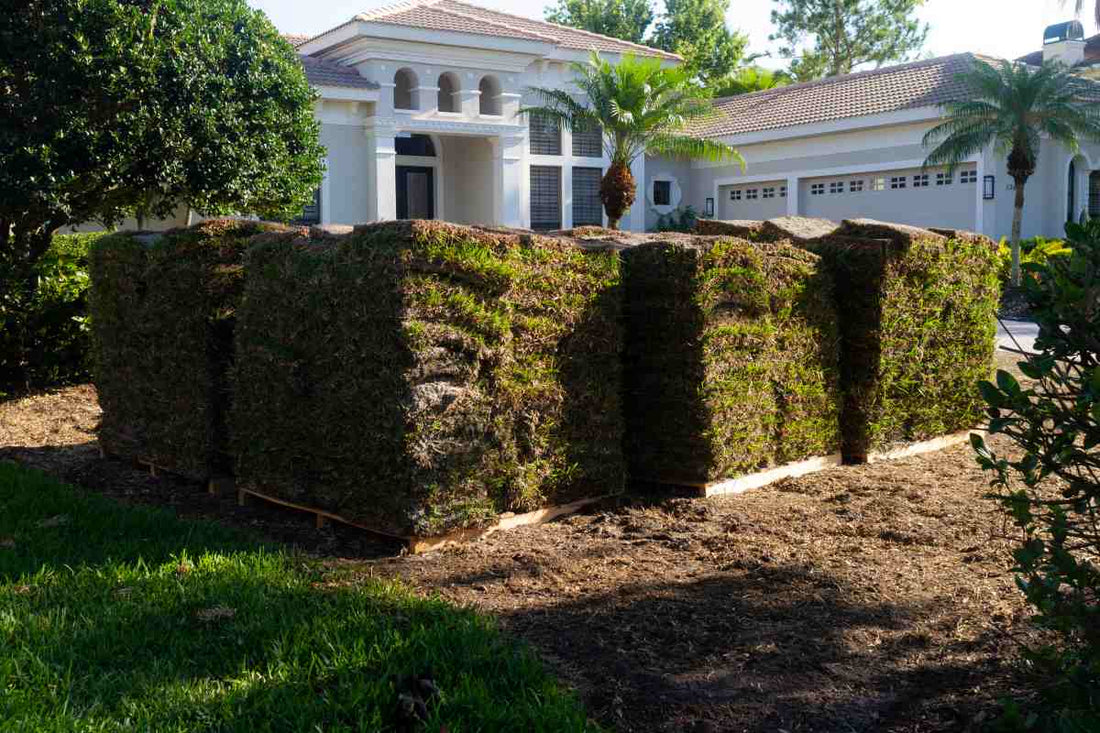
6 Mistakes to Avoid When Measuring Lawn for Sod Installation
Jamie TedderSod is one of the most convenient ways to establish a lush, green lawn. It offers instant coverage, prevents soil erosion, improves water filtration, and elevates curb appeal with minimal waiting time. However, the process of laying sod requires precision, especially when it comes to sod measurement. Because sod is sold by the square foot, every piece counts. Proper planning ensures you buy just the right amount, avoiding waste and saving money.
Previously, we’ve discussed tips for measuring irregularly shaped lawns and common mistakes to avoid when laying sod. This guide focuses on a critical step: measuring your lawn accurately to determine how much sod you need.
1. Skipping a Site Inspection
Overlooking obstacles like garden beds, trees, or pathways can lead to significant miscalculations when ordering sod. If these areas are not excluded from the total square footage, you may end up ordering more sod than necessary, resulting in wasted materials and increased costs.
To avoid this mistake, start by walking the entire lawn to identify any features that don't need sod, such as patios, paved walkways, or flower beds. Adjust your calculations to account for these non-grass areas and ensure accurate results.
2. Not Accounting for Slope and Uneven Areas
Failing to account for slopes and uneven terrain is another common issue that can lead to underestimating how many square feet of sod you need. Slopes require more sod than flat areas due to their increased surface area. Ignoring this factor can leave you short of material, particularly in larger projects.
Avoid this mistake by measuring slopes separately from flat areas, following the contours of the land with flexible tape or other suitable tools. Be sure to include extra sod in your total square feet to accommodate these adjustments, ensuring complete coverage without gaps.
3. Using the Wrong Tools
Using inappropriate tools, such as a standard tape measure, can result in inaccurate measurements, particularly for larger spaces. A tool that isn’t designed for outdoor use may also lead to inconsistent results, affecting how much sod you order.
For better accuracy, use a wheel measure or a long measuring tape to handle outdoor conditions. Digital tools, like a sod calculator, can also help you better calculate sod, especially when working with irregularly shaped lawns.

4. Forgetting to Measure Sod in Sections
Attempting to measure your lawn in one go often leads to errors, particularly if the space includes irregular shapes or different zones. Breaking the lawn into smaller sections allows for more accurate measurements and better calculations.
Divide your lawn into manageable rectangles or squares. Measure the length and width of each section, then multiply them to find the area. Add the totals from each section to determine the overall square footage. This method is particularly handy for irregularly shaped lawns, where precise measurements are crucial.
5. Not Adding a Buffer
Ordering exactly the amount of sod you need without any buffer leaves no room for errors or trimming. Small miscalculations or unexpected issues during installation can create gaps in coverage, leading to an uneven lawn.
While we don’t encourage waste, it’s wise to add a little extra to your total sod order to ensure you have enough for a successful installation. This buffer allows for trimming around curves, fitting odd shapes, and compensating for minor mistakes. The added cost is minimal but can prevent the inconvenience of running out of sod mid-installation and having to place another order.
6. Overlooking Soil Preparation
Measuring before preparing the soil can lead to discrepancies in your calculations. Soil preparation, such as leveling and debris removal, can slightly change the size and shape of the area needing sod.
Prepare the soil first by clearing debris, leveling uneven spots, and compacting loose areas. Once the ground is ready, measure the lawn to calculate the exact amount of sod needed. Proper soil preparation not only ensures accurate measurements but also creates optimal conditions for sod installation and healthy root establishment.

Final Thoughts
Measuring for sod installation might seem straightforward, but overlooking key details can lead to costly mistakes. By avoiding these common pitfalls, you can confidently calculate how many square yards of sod you need, ensuring a successful installation and a thriving lawn.
For premium sod grass for sale and other lawn care products, trust Bethel Farms. We offer high-quality solutions for all your lawn needs. Visit our blog for more expert advice, or contact our team for personalized recommendations.

